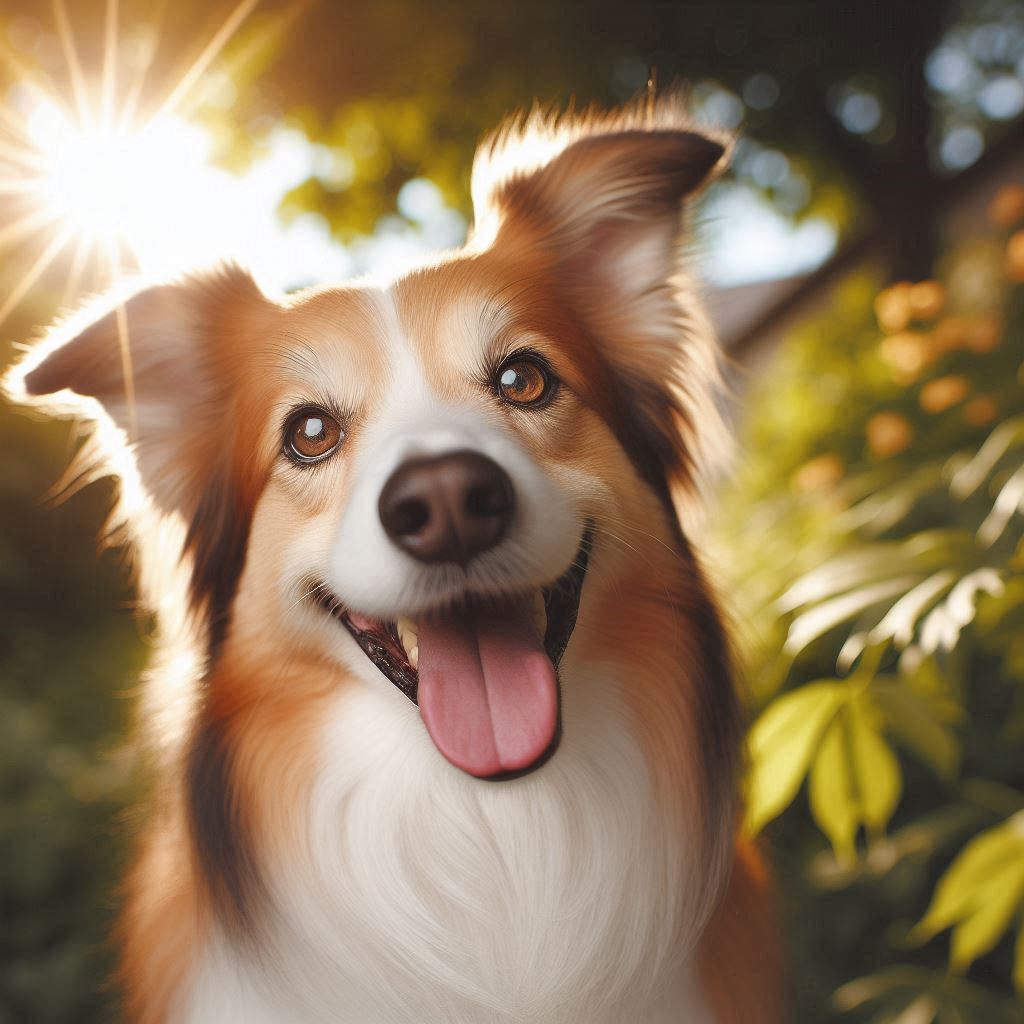Interpreting a dog’s smile isn’t as straightforward as it is with humans. While a dog showing teeth might look like a happy grin, it can have different meanings depending on the context. Here’s a closer look:

What a “Smile” Might Mean
- Playfulness: A relaxed mouth with open lips and exposed teeth, accompanied by a wagging tail and playful body language, often indicates a happy and playful dog ready for fun. This expression typically occurs during playtime or when the dog is excited to see you. The key indicators are the dog’s overall relaxed demeanor and the enthusiastic, joyous movements.
- Submission: Sometimes, a submissive grin involves showing teeth along with flattened ears, a lowered body posture, and averted eyes. This appeasement gesture signifies they don’t pose a threat and might be appropriate during greetings or when feeling unsure. It’s their way of saying, “I mean no harm,” and is often seen in interactions with other dogs or new people.
- Alertness: In certain situations, a dog might bare its teeth with a stiff posture and focused gaze. This could indicate alertness or potential aggression, especially if accompanied by growling or a low growl. It’s crucial to note the context here: if the dog seems tense and is not in a playful or submissive posture, this “smile” might be a warning sign.
- Panting: Dogs pant to regulate their body temperature. Sometimes, panting can cause their mouth to be open in a way that resembles a smile. If your dog is panting but otherwise seems relaxed and comfortable, this open-mouthed expression is likely just part of their cooling process, especially after exercise or in warm weather.
Signs of a Happy Dog
- Relaxed Body Posture: A loose and wiggly body, coupled with a wagging tail, often indicates a happy and content dog. This relaxed posture is a sign that your dog feels safe and comfortable in their environment.
- Playful Bows: Play bows, where a dog lowers their front legs and raises their rear end, accompanied by playful barks or whines, are signs of a dog ready to engage in play. This classic pose is a clear invitation for fun and interaction.
- Eye Contact and Soft Gaze: Making relaxed eye contact with you and having a soft gaze can indicate trust and affection. Dogs who are happy and comfortable often seek out gentle eye contact as a way to bond and communicate with their owners.
Here’s the Takeaway
- Context is Key: Look at the entire picture – body language, tail movement, and the situation – to understand what your dog’s “smile” means. The context in which your dog is showing their teeth will help you determine whether they are feeling playful, submissive, alert, or simply cooling down.
- Happy Signs Matter: Focus on the overall signs of happiness like a relaxed body, playful bows, and happy wags. These cues are more reliable indicators of your dog’s emotional state than a “smile” alone.
So, while a dog’s “smile” might not always be a sign of pure joy like in humans, it can often be an indicator of playfulness and contentment, especially when accompanied by other positive body language cues. Understanding these signs will help you better connect with your furry friend and ensure their well-being.
